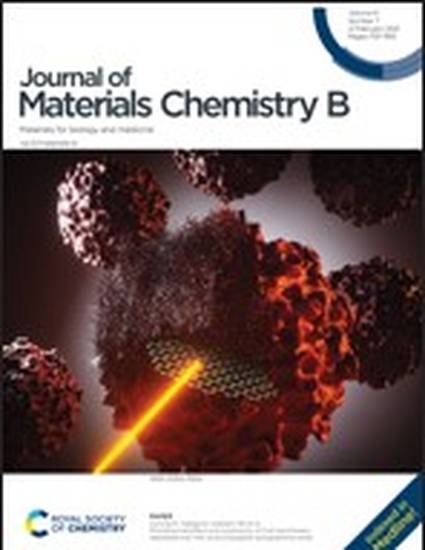
Article
Photothermal effect and cytotoxicity of CuS nanoflowers deposited over folic acid conjugated nanographene oxide
Journal of Materials Chemistry B
(2020)
Abstract
Herein, we present the rational synthesis of a multimode photothermal agent, NGO–FA–CuS, for the advancement of photothermal therapy of cancer. The hierarchical architecture created in NGO–FA–CuS was attained by the covalent conjugation of folic acid (FA) to nanographene oxide (NGO) through amide bonding, followed by the hydrothermal deposition of CuS nanoflowers. In this approach, instead of mere mixing or deposition, FA was covalently bonded to NGO, which helped in retaining their intrinsic properties after binding and allowed to access them in the resulting hybrid nanostructure. In this specifically designed photothermal agent, NGO–FA–CuS, each component has an explicit task, i.e., NGO, FA and CuS act as the quencher, cancer cell-targeting moiety and photothermal transduction agent, respectively. Prior to the grafting of FA molecules and the deposition of CuS nanoflowers, sulfonic acid groups were introduced into NGO to provide stability under physiological conditions. Under irradiation using a 980 nm laser, NGO–FA–CuS was able to attain a temperature of 63.1 °C within 5 min, which is far beyond the survival temperature for cancer cells. Therefore, the resulting temperature recorded for NGO–FA–CuS was sufficient to induce hyperthermia in cancer cells to cause their death. When coming into contact with cancer cells, NGO–FA–CuS can cause a rapid increase in the temperature of their nucleus, destroy the genetic substances, and ultimately lead to exhaustive apoptosis under illumination using a near-infrared (NIR) laser. An excellent photothermal efficiency of 46.2% under illumination using a 980 nm laser and outstanding cytotoxicity against HeLa, SKOV3 and KB cells were attained with NGO–FA–CuS. Moreover, NGO–FA–CuS displays exceptional persistent photo-stability without photo-corrosiveness. The photothermal effect of NGO–FA–CuS was found to be dependent on its concentration and the power density of the laser source. It was found that its cytotoxicity toward cancer cells was enhanced with an increase in the concentration of NGO–FA–CuS and the incubation period.
Disciplines
Publication Date
Fall December 12, 2020
Citation Information
Gururaj M Neelgund, Aderemi Oki, Subhani Bandara and Laura Carson. "Photothermal effect and cytotoxicity of CuS nanoflowers deposited over folic acid conjugated nanographene oxide" Journal of Materials Chemistry B (2020) Available at: http://works.bepress.com/subhani-bandara/4/
